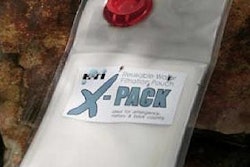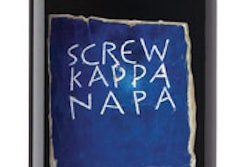
Michael Wedge, President and CEO of BJ’s Wholesale Club, lays out his company’s objective clearly. It’s to be “the consumer club of choice in the membership warehouse club industry.” Packaging is playing an important role in driving toward that objective by positioning BJ’s as a club store offering its own quality private-label products that appeal to consumer needs and desires. The goal is to make BJ’s a destination for consumer club members.
The results? Kristine Modugno, Manager of Corporate Brands, reports that sales of existing products increased 30% in the first year after the packaging was redesigned under the umbrella of BJ’s own private-label consumer brand, Berkley & Jensen. And Berkley & Jensen products in their second year of existence are averaging double-digit sales increases over year one. From the perspective of growing private label’s impact on BJ’s bottom line, the strategy is paying off, too. Private label has increased to 6.5% of BJ’s total sales.
How did all this happen for this operator of 154 warehouse club stores? Although BJ’s introduced the warehouse club store concept in the Northeastern U.S. in the mid-1980s, it has recently become necessary for BJ’s to create its own identity amid in response to stiffening competition from Costco Wholesale Corp. and Sam’s Club.
Building a club store brand
BJ’s created the Berkley & Jensen brand to appeal to its consumer club members, whom it calls its “Inner Circle,” with characteristics similar to national brands sold in supermarkets. (BJ’s other private-label brand, Executive Choice, was created simultaneously to appeal to business members with the types of products and graphic imagery found in foodservice distributors, office supply stores, and auto supply stores.)
BJ’s is riding Berkley & Jensen’s success in creating its niche in the club store business. BJ’s has achieved success with a winning combination—a clear and unique strategy and superb execution of that strategy.
The most important job in creating an effective private label is to formulate a brand positioning reflecting the corporate strategy. Working with Wright Design, BJ’s defined its new proposed brand with the following criteria:
• Unique. The brand promise has to be unique within its competitive framework.
• Relevant. What the brand offers has to be important to its target consumer.
• Believable. Consumers must believe the brand can perform as promised.
• Performable. The brand must perform as promised.
How does Berkley & Jensen conform to this brand positioning litmus test? Let’s take another look at the criteria.
• Unique
Kirkland Signature at Costco and Member’s Mark at Sam’s Club’s cater to business club members. Sam’s Club’s operates under the theme that “We are in business for small business.” On the other hand, Berkley & Jensen appeals to consumers.
• Relevant
BJ’s success with smaller package units, a greater variety of flavors and sizes, a growing emphasis on perishables, and food and consumer-appealing package graphics attests to Berkley & Jensen’s importance to its target audience. Inner Circle members account for as much as 90% of BJ’s sales. They are attracted to BJ’s wider variety of package sizes. Example: BJ’s offers both eight- and 12-packs of 6-oz StarKist and Bumble Bee tuna while Costco stocks 12-packs of 6-oz Chicken of the Sea tuna.
• Believable
Over time, the numbers are pointing to BJ’s as the preferred club store for consumer members.
• Performable
BJ’s offers a more consumer-friendly assortment of products than Costco and Sam’s Club. By doing so, the Berkley & Jensen brand is truly making inroads into the supermarket business and becoming a “destination brand.”
Creative Execution
The club store environment presents many unusual challenges in creating effective packaging graphics. Club stores tend to be more dimly lit than supermarkets. The trays containing the packages often obliterate the package graphics. This increases the need for tray graphics that communicate and sell.
Finally, in club stores, the packaging will fill an entire pallet of product on the floor under a (no so attractive) steel structure.
Wright Design, working with BJ’s to keep the circumstances of the store environment and brand positioning in mind, created a list of package design objectives for Berkley & Jensen products:
1. Convey quality on a par with national brands.
Perhaps the most important feature of the Berkley & Jensen package graphics execution is the treatment of each product under the umbrella of a national brand. The primary design goal is complementing the quality product in the package with an equally premium or “national brand look.” It starts with the Berkley & Jensen visual identity—sharp and clear with a rich blue, multi-toned background inside an eye-catching oval icon. Package copy is succinct. Fonts are easy to read. Designs are simple and appropriate for the product segment.
2. Reflect product category cues.
Marketers of many private label-brands think in terms of product attributes or characteristics when they should be focusing on consumer product benefits. Berkley & Jensen products reflect consumer benefits. The designs take on the tone and manner established by the leading brands in their particular product segment.
The design for Berkley & Jensen paper towels, much like Bounty, Brawny and Viva, features bold colors, clear and large fonts, a large logo, but no photography. It communicates the primary benefit of strength. On the other hand, much like Cottonelle and Charmin, the Berkley & Jensen bathroom tissue design conveys softness and purity through light colors and the photograph of a baby. The Berkley & Jensen tampons package improves upon the national brand competition with a more feminine-looking design—images of flower petals in the foreground with the illustration of a woman recessed into the background.
3. Consider the club store environment.
Key package design objectives for Berkley & Jensen are to make the line of products easy for consumers to select and easy for store associates to identify and stock in the right locations on store shelves. Consumers find club stores are harder to shop than supermarkets. Product sections are not as well defined and, as noted earlier, secondary cartons and trays frequently obliterate the packaging they contain.
Lighting poses the most significant package design obstacle in club stores. (Here’s a tip: When presenting a potential item to a club store buyer, show it under a desk. That environment will approximate club store lighting.) Thus, Berkley & Jensen package designs tend to have brighter, lighter colors. Where dark backgrounds are appropriate, lighter fonts and images create contrast. Frequently, if the package is darker, the tray is lighter in color, and vice versa.
Ah, and then we have the trays! Designers need to exhibit as much tender loving care and creativity in developing effective selling cartons and trays as they do for individual packages. In club stores, the tray is often more important to the sale than the packages.
Berkley & Jensen tray fronts are typically preprinted litho mounted labels. They mirror the same qualities found on packaging for national brands in terms of number of colors used, appealing graphics, and high-quality printing.
BJ’s approach to growing a private-label brand demonstrates that strategic packaging design can significantly increase sales. Your chances for success increase when you know who is buying your product and why, and in what conditions.
Dale Grant Casto Jr. is President of Wright Design, a graphic and packaging design firm in Action, MA. Contact Dale at 978/635-9997 or [email protected].

























